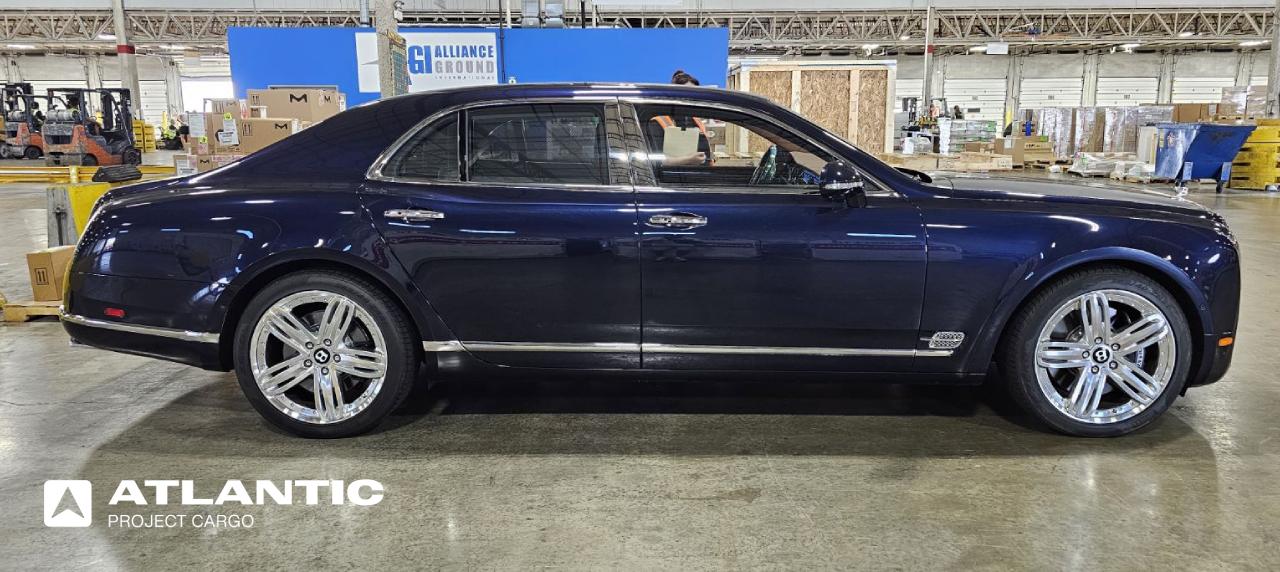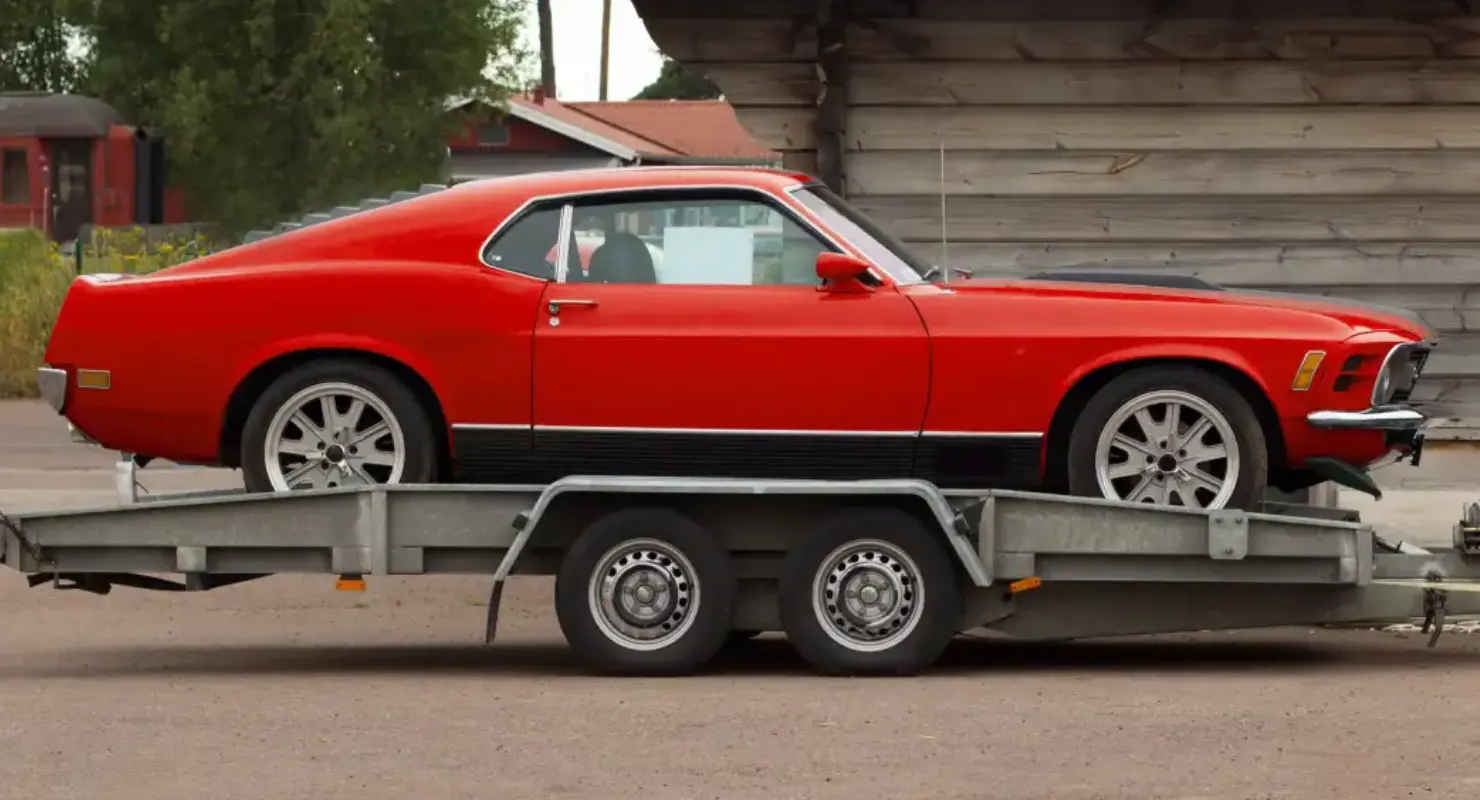
Moving overseas can be an exciting experience for military members. If they plan to ship their vehicle or POV (Privately Owned Vehicle), they need extra work and planning.
This article outlines the key steps for smooth car transportation. It covers the conditions for the car shipping, timing, required documentation, and other rules.
Atlantic Project cargo can assist in shipping cars overseas for military personnel. We provide reliable and cost-effective vehicle transport solutions, including insurance, customs brokerage, provision of the necessary documentation, and more.

CONUS and OCONUS Shipments
CONUS stands for “contiguous United States.” This includes the 48 US states on the continent of North America and Washington, D.C.
OCONUS means “outside the contiguous United States”. It does not mean foreign countries. It refers to states and U.S. territories that are not a part of the continental U.S., such as Hawaii, Alaska, Guam, Puerto Rico, America Samoa, and Saipan. These territories are considered overseas.
Free Military Car Shipping

If you are an active-duty service member traveling for Temporary Duty (TDY) or a Permanent Change of Station (PCS), you may be eligible for a mileage allowance instead of reimbursement for the actual costs of using your POV.
This allowance, provided by the Department of Defense (DoD), helps support PCS moves overseas. It’s a great benefit that makes sure your vehicle gets where it needs to be, so you can focus on other parts of your move.
If you decide to drive your vehicle to your new duty station, you can request mileage reimbursement through the Personally Procured Move (PPM) program.
Alternatively, you can choose to have your vehicle shipped by an approved shipping company. However, the DoD may or may not cover the mileage for this option.
Privately Owned Vehicle You May Ship
Military personnel can only ship self-powered motor vehicles. This includes cars, motorcycles, scooters, vans, and trucks. Some other types of vehicles might also qualify, but you may need a written statement confirming they are for personal use.
By US law, the government will cover the shipping cost for one POV weighing up to 4409,25 lbs (20 metric tons). If your vehicle is larger than the allowed size, you will need to pay extra fees.
If your car has been modified, it might not be allowed in the new place, as some changes need special approvals to be shipped. Rules can differ, so check the details for your new duty station.
Timing
Each branch has different rules for shipping military POV:
- For Army and Air Force members, vehicles can be shipped if they are delivered to the port within 90 days after leaving for an overseas tour of more than a year, or within 30 days for a tour of one year or less
- For Navy and Marine Corps members, vehicles can be shipped if there are at least 12 months left at their current overseas duty station when the car is delivered to the loading port
Shipping times can vary from two to eight weeks depending on where you are sending your auto, and the government does not cover rental costs. It is usually much more costly to rent a vehicle overseas than in the US.
As transportation times for leaving and returning can differ by military branch, discuss the terms with your logistics provider and plan accordingly.
Required Documentation for Transporting Vehicles Overseas
Make sure you have all your documents ready. To make shipping military personnel car easier, prepare the following ones:
- Official orders and amendments
- Valid Government/State issued ID
- The Certificate of Title
- A paid Bill of Sale
- Bill of Lading
- Vehicle registration certificate, or both your title and registration
- If you have a lien on the car, you need a lien holder authorization letter. Contact your lien holder to get this document
- If your vehicle is leased, you need a letter allowing you to ship it. For long-term leases (12 months or more), you must get written permission from the leasing company. You are still responsible for all terms in the lease
- If someone else will be shipping the car for you, they will need a signed and certified power of attorney. This does not apply to a spouse listed on your official travel orders
Before shipping, the car will undergo a joint inspection to document any damages. You will need to sign the DD788 inspection form as a record of this inspection.
Other documents you should provide
Military personnel also need to provide:
- Emergency contact information
- A valid email address
- A destination address
- A notification address
The address must be able to receive mail and can be a friend’s or relative’s. It should include the street name and number, city, and zip code.
Registering your car at the duty station
To register your car at your new duty station, you will need the following documents:
- AE Form 550-175A – Import certificate
- AE Form 190-1AA – Registration application
- Overseas driver’s license
- License plates
NOTE: Сheck any restrictions or requirements for bringing your POV to your new location.
EPA and DOT Sticker Requirements
Make sure your car has the EPA and DOT stickers for successful sending overseas.
The EPA sticker is usually found under the hood or in the engine compartment of cars and trucks. For motorcycles and scooters, the sticker is in an easy-to-reach spot, like under the seat or on the frame.
If the EPA sticker is missing or hard to read, you will need a compliance letter from the EPA before the transportation. To get this letter, you must show proof to the EPA, such as a stateside title, stateside registration, or a CARFAX report.
You can find the DOT sticker on the driver’s door area or the edge of the door. Scooters and motorcycles have this label near the steering post and handlebars. The sticker includes the car’s VIN. If this sticker is missing or hard to read, you must provide proof, like a stateside title (which must state that the vehicle meets DOT requirements), stateside registration, or a CARFAX report on the day you turn in your car for shipping overseas.
Car Preparation for Shipment

The POV shipped overseas must be very clean to meet USDA rules. It will be checked closely to make sure it has no dirt, soil, plants, or living organisms.
If your car is not clean enough, you will get an Agricultural Reject Sheet that tells you what needs to be cleaned. Your car will only be accepted after it meets the cleanliness standards.
Checklist for vehicle preparation
- Clean the exterior of your car. Also, clean your wheel wells and fuel area by wiping or spraying them
- Make sure the motor area is clean. Then, wipe down or spray off the hood and engine
- Clean all door edges and the trunk seal. If you have a van, remember to clean the sliding door tracks. For SUVs and vans, clean the back hatch area, especially around the hinges. If your SUV has an opening rear window, make sure to clean the seal there too
- Vacuum your car’s interior, including the floor mats, under the seats, and between the seats and the center console. Use a flashlight to see better. Also, vacuum the trunk, including cleaning the area where the spare tire is stored. If you cleaned the inside of your car, it should have been done at least 14 days before shipping to let it dry fully
- Take out all items that are not permanently attached, such as loose electronics, liquids, pressurized cans, flammable items, and air fresheners
You are only allowed to ship items meant for operating the vehicle or transporting passengers. But you can load your car with some necessary items, like:
- Hand tools (up to $200 in value)
- Jacks, jumper cables, tire irons, and fire extinguishers
- One spare tire or two snow tires, and child car seats
Additional “Musts”
- Your fuel tank should be at a quarter full or less
- Provide a complete set of keys for the car, including keys for the ignition, doors, trunk, gas cap, and wheel locks
- Make sure your auto is in good working order, with no leaks and no major cracks in the windshield
After Shipping
When you pick up your car after shipping overseas, bring these documents:
- A valid government or state-issued ID. If someone else is picking up the car for you, they also need an ID
- The vehicle inspection and shipping form. If you can’t pick up the car yourself, you can have a family member or friend do it for you, but you need to give them a notarized power of attorney or a letter of authorization
Once you reach your new place, follow the local rules for licensing and registering your vehicle. These rules can be different in each place, and deadlines can be tight. Check with your Military and Family Support Center to help you plan and avoid fines.
Buying a Car at Your Destination
Some families need two cars, so many people choose to buy a car while overseas. Remember, the same rules apply when you move back, and changing a foreign car to meet U.S. standards can be costly.
Different countries have different laws, and some vehicles, even American ones, might not be legal to drive in the U.S. If you buy a car abroad, do your research so you do not face issues when you return home.
Conclusion
Shipping military POV is an important aspect of ensuring that service members can maintain comfort while away from home.
Understanding all the aspects of overseas vehicle shipping, including documentation requirements and laws, is essential for smooth transportation. By being well-informed and prepared, military personnel can navigate the complexities of vehicle shipping with confidence.
Atlantic Project Cargo provides comprehensive support throughout the entire transportation process. We are an experienced provider of vehicle shipping services. Contact us for a free quote!
Read More


